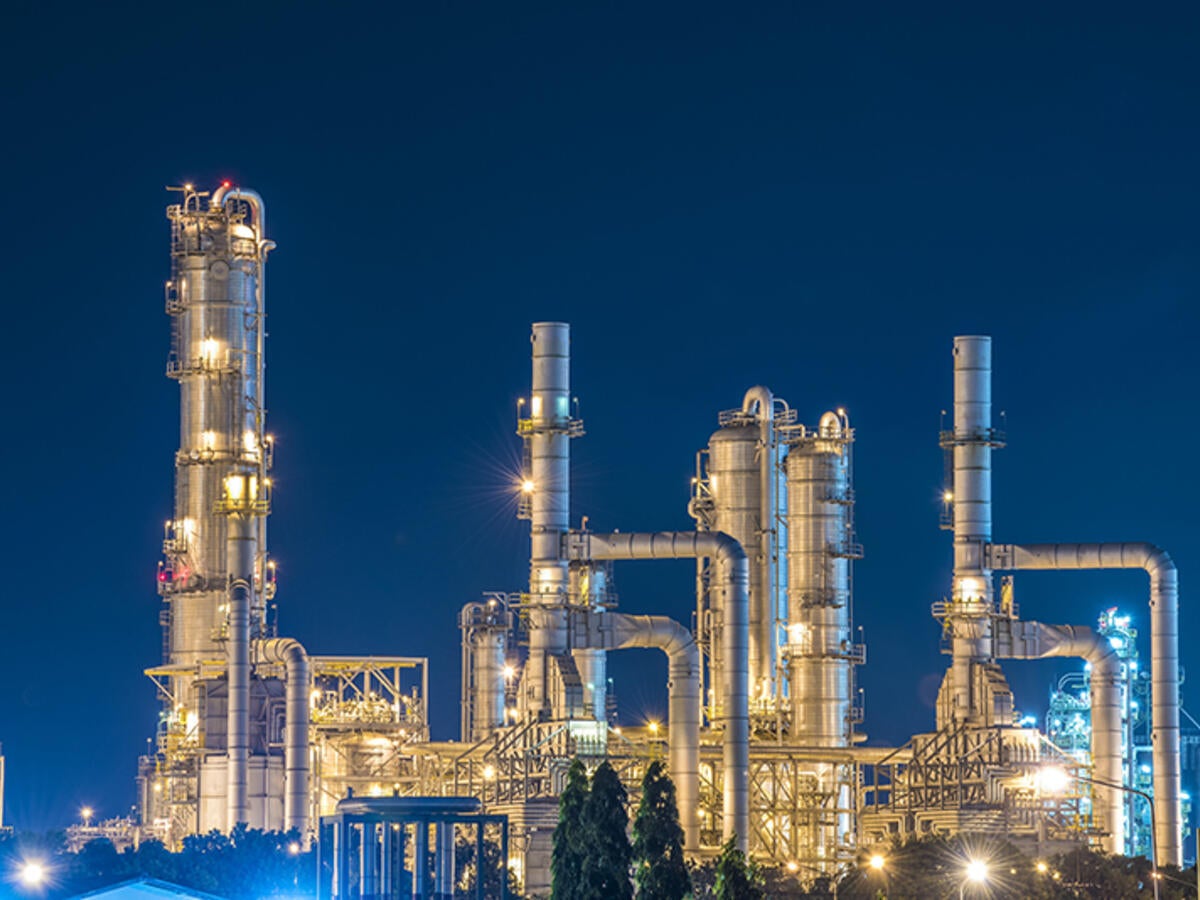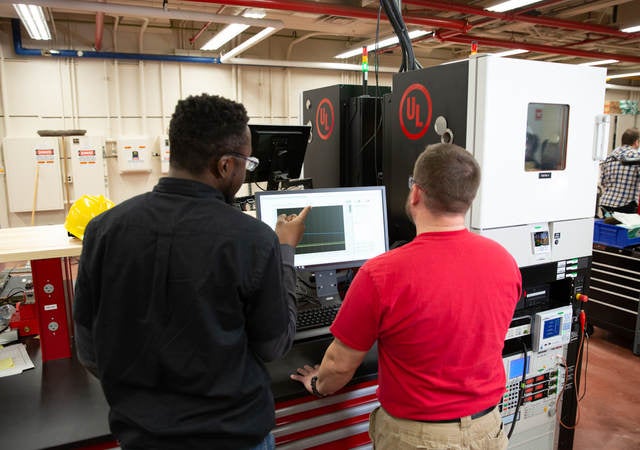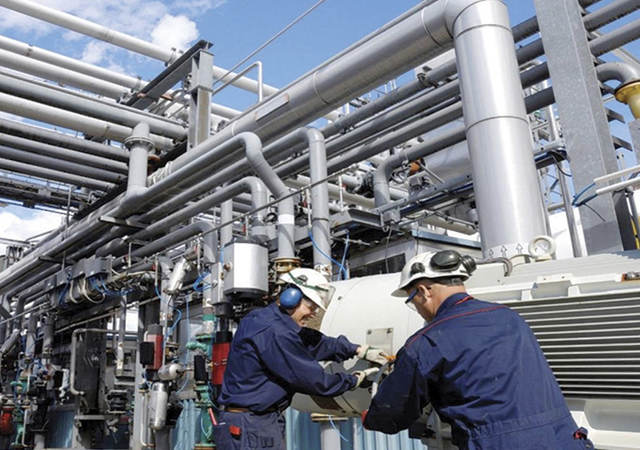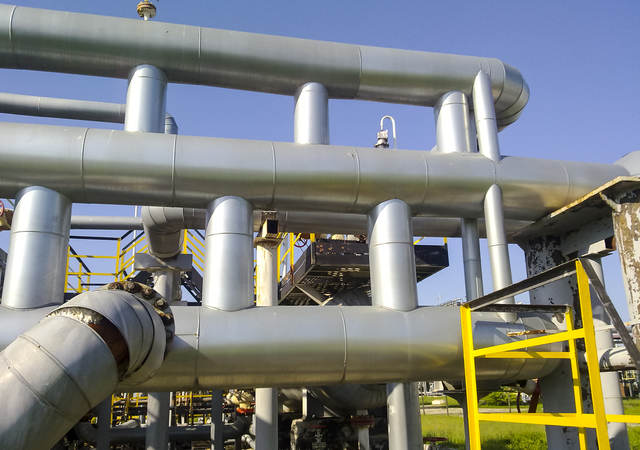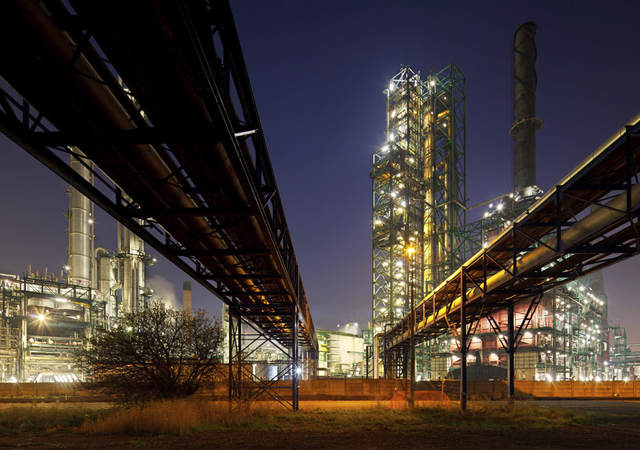A top issuer of ATEX hazardous locations certifications for the European Union
UL is one of the top issuers of global ATEX and IECEx certifications. This supports acceptance of your UL-issued certificates, test reports and quality audits for local country marks around the globe. The UL brand is highly recognized and accepted by certifiers, installers and regulators in local, regional or international markets. Leverage our global brand acceptance and trust to add value to your innovations.
ATEX Certification for the European Union overview
Hazardous locations and explosion-protected equipment intended for installation in the European Union must comply with the ATEX Directive 2014/34/EU, replaced the former ATEX Directive 94/9/EC. The directive ensures the free movement of goods throughout the European Union (EU) by harmonizing compliance procedures. We are an accredited Notified Body and Ex Testing Laboratory for electrical and nonelectrical equipment based on the EN 60079, EN 80079 and EN 13463 series of harmonized standards. We can also help with functional safety requests. Learn about ATEX certification and area classification, including applicable HazLoc Directives, markings, and the difference between Groups and Categories.
Certification process services include:
- Ordinary Location/Safe Area Requirements – the CE mark is a self-declaration marking indicating that equipment conforms to applicable directives which vary depending on the product type. UL can assist in preparing a technical file to demonstrate compliance and declaration of conformity.
- Ex Marking Certification – products sold in the EU must be marked with the Distinctive Community Mark (Ex in a hexagon) and the CE marking in accordance with the directive. We can help you identify applicable requirements and assemble a technical file. We post EU certificates online for customer’s and inspector’s access.
- Unit Verification – the Unit Verification Service provides certification for customized equipment that is intended to be used in a potentially explosive atmosphere and for installation in the EU.
- Quality Audits – the directive requires a quality assurance process and procedure to be in place to help ensure continued compliance of Ex Certified products. UL has auditors around the world that can perform these audits.
- Repair Facility Certification – we can help facilities that intend to repair existing certified products per EN 60079-19.
What are the applicable ATEX Directives?
Organizations in the EU must follow directives to help protect employees from explosion risk in areas with an explosive atmosphere.
There are two ATEX Directives (one for the manufacturer and one for the user of the equipment):
- ATEX Directive 2014/34EU – equipment and protective systems intended for use in potentially explosive atmospheres
- ATEX Workplace Directive 1999/92/EC – minimum requirements for improving the safety and health protection of workers potentially at risk from explosive atmospheres
The Directive 2014/34/EU became effective on April 20, 2016 and it affects manufacturers for the following:
- The Directive 2014/34/EU is mandatory for manufacturers as of April 20, 2016, as is stated in Article 44 of the directive for any new or revised certifications.
- The Directive requires risk analysis to be provided to the Notified Body (UL) by the manufacturer for all EU Type Examination certificates and Certificates of Conformity.
- Manufacturers must refer to the directive 2014/34/EU in their EU Declaration of Conformity.
- Importers (into EEA) should note a wide range of requirements (incl. marking) that are applicable.
Links to resources:
How are ATEX Hazardous Areas classified?
Hazardous areas are divided into Groups and Categories and further subdivided into Zones, Groups, Protection Types, and Equipment Protection Levels (EPLs).
Sample Marking:
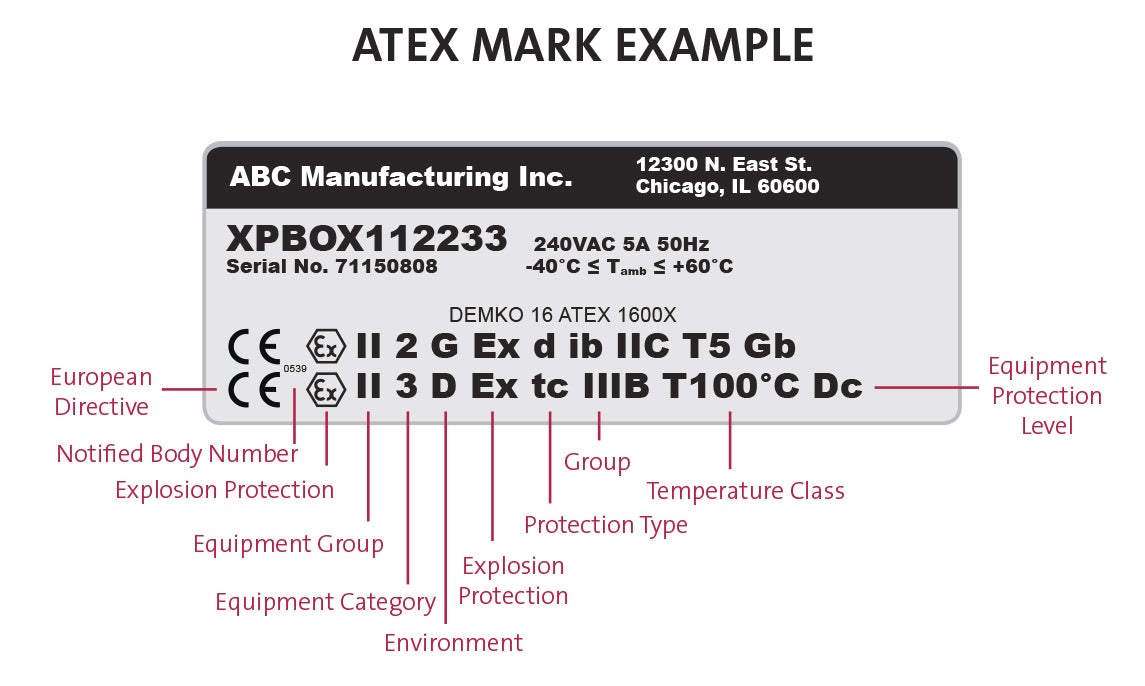
ATEX Groups and Categories
Groups and Categories are defined in the ATEX Directive 2014/34/EU, as follows:
- Equipment-Group I
- Comprises equipment intended for use in the underground parts of mines, and to those parts of surface installations of such mines, likely to become endangered by firedamp and/or combustible dust, compromising equipment Categories M1 and M2 as set out in the Annex I of the Directive.
- Category M1 – equipment in this category is required to remain functional for safety reasons when an explosive atmosphere is present and are characterized by integrated explosion protection measures functioning in such a way that:
- In the event of failure of one integrated measure, at least a second means of protection provides for a sufficient level of safety; or,
- In the event of two faults occurring independently of each other, a sufficient level of safety is ensured.
- Category M2 – equipment in this category is intended to be de-energized in the event of an explosive atmosphere being detected.
- Category M1 – equipment in this category is required to remain functional for safety reasons when an explosive atmosphere is present and are characterized by integrated explosion protection measures functioning in such a way that:
- Comprises equipment intended for use in the underground parts of mines, and to those parts of surface installations of such mines, likely to become endangered by firedamp and/or combustible dust, compromising equipment Categories M1 and M2 as set out in the Annex I of the Directive.
- Equipment-Group II
- Comprises equipment intended for use in other places likely to become endangered by explosive atmospheres, compromising equipment Categories 1, 2 and 3 as set out in Annex I of the Directive.
- Category 1 – this category comprises equipment designed to be capable of remaining within their operational parameters, stated by the manufacturer, and ensuring a very high level of protection for their intended use in areas in which explosive atmospheres caused by mixtures of air and gases, vapors, mists or air/dusts mixtures are highly likely to occur and are present continuously, for long periods of time or frequently.
- Category 2 – this category comprises equipment designed to be capable of remaining within their operational parameters, stated by the manufacturer, and based on a high level of protection for their intended use, in areas in which explosive atmospheres caused by mixtures of air and gases, vapors, mists or air/dust mixtures are likely to occur.
- Category 3 – this category comprises equipment designed to be capable of keeping within its operational parameters, stated by the manufacturer, and based upon a normal level of protection for its intended use, considering areas in which explosive atmospheres caused by mixtures of air and gases, vapors, mists or air/dust mixtures are unlikely to occur and if they do occur, do so infrequently and for a short period of time only.
- Comprises equipment intended for use in other places likely to become endangered by explosive atmospheres, compromising equipment Categories 1, 2 and 3 as set out in Annex I of the Directive.
ATEX Zones
Zones are defined in the ATEX Workplace Directive 1999/92/EC, as follows:
- Gas, Vapor, or Mist
- Zone 0 – a place in which an explosive atmosphere consisting of a mixture with air of flammable substances in form of gas, vapor or mist is present continuously or for long periods or frequently.
- Zone 1 – a place in which an explosive atmosphere consisting of a mixture with air of flammable substances in form of gas, vapor or mist is likely to occur in normal operation occasionally.
- Zone 2 – a place in which an explosive atmosphere consisting of a mixture with air of flammable substances in form of gas, vapor or mist is not likely to occur in normal operation but, if it does occur, will persist for a short period only.
- Dust
- Zone 20 – a place in which an explosive atmosphere in the form of a cloud of combustible dust in air is present continuously, or for long periods or frequently.
- Zone 21 – a place in which an explosive atmosphere in the form of a cloud of combustible dust in air is likely to occur in normal operation occasionally.
- Zone 22 – a place in which an explosive atmosphere in the form of a cloud of combustible dust in air is not likely to occur in normal operation but, if it does occur, will persist for a short period only.
- Group I – Zone 0 or 1
Mines Susceptible to Firedamp
- Group II – Zone 0, 1, and 2
- IIC – Acetylene & Hydrogen
- IIB + H2 – Hydrogen
- IIB – Ethylene
- IIA – Propane
- Group III – Zone 20, 21, and 22
- IIIC – Conductive Dust
- IIIB – Non-Conductive Dust
- IIIA – Combustible Flyings
- Protection Types – Gas Atmospheres
- “da” – flameproof (for EPL Ga or Ma)
- “db” – flameproof (for EPL Mb or Gb)
- “dc” – flameproof (for EPL Gc)
- "eb” – increased safety (for EPL Gb or Mb)
- "ec” – increased safety (for EPL Gc)
- “ia” – intrinsic safety (for EPL Ga or Ma)
- “ib” – intrinsic safety (for EPL Gb or Mb)
- “ic” – intrinsic safety (for EPL Gc)
- “ma” – encapsulation (for EPL Ga or Ma)
- “mb” – encapsulation (for EPL Gb or Mb)
- “mc” – encapsulation (for EPL Gc)
- “nA” – non-sparking (for EPL Gc)
- “nC” – protected sparking (for EPL Gc)
- “nR” – restricted breathing (for EPL Gc)
- “o” – oil immersion (for EPL Gb)
- “op is” – inherently safe optical radiation (for EPL Ga, Gb or Gc)
- “op pr” – protected optical radiation (for EPL Gb or Gc)
- “op sh” – optical system with interlock (for EPL Ga, Gb or Gc)
- “pv” – pressurization (for EPL Gb or Gc)
- “px” – pressurization (for EPL Gb or Mb)
- “py” – pressurization (for EPL Gb)
- “pz” – pressurization (for EPL Gc)
- “q” – powder filling (for EPL Gb or Mb)
- Protection Types – Dust Atmospheres
- “ta” – protection by enclosure (for EPL Da)
- “tb” – protection by enclosure (for EPL Db)
- “tc” – protection by enclosure (for EPL Dc)
- “ia” – intrinsic safety (for EPL Da)
- “ib” – intrinsic safety (for EPL Db)
- “ma” – encapsulation (for EPL Da)
- “mb” – encapsulation (for EPL Db)
- “mc” – encapsulation (for EPL Dc)
- “p” – pressurization (for EPL Db or Dc)
- Non-Electrical Protection Types
- “d” – flameproof
- “c” – constructional safety
- “b” – control of ignition
- “k” – liquid immersion
- “p” – pressurization
- Equipment Protection Level (EPL)
- Level of protection assigned to equipment based on its likelihood of becoming a source of ignition and distinguishing the differences between explosive gas atmospheres, explosive dust atmospheres, and the explosive atmospheres in mines susceptible to fire damp.
- EPL Ma – equipment for installation in a mine susceptible to firedamp, having a very high level of protection, which has sufficient security that it is unlikely to become an ignition source in normal operation, during expected malfunctions or during rare malfunctions, even when left energized in the presence of an outbreak of gas.
- EPL Mb – equipment for installation in a mine susceptible to firedamp, having a high level of protection, which has sufficient security that it is unlikely to become a source of ignition in normal operation or during expected malfunctions in the time span between there being an outbreak of gas and the equipment being de-energized.
- EPL Ga – equipment for explosive gas atmospheres, having a very high level of protection, which is not a source of ignition in normal operation, during expected malfunctions or during rare malfunctions.
- EPL Gb – equipment for explosive gas atmospheres, having a high level of protection, which is not a source of ignition in normal operation or during expected malfunctions.
- EPL Gc – equipment for explosive gas atmospheres, having an enhanced level of protection, which is not a source of ignition in normal operation and which may have some additional protection to ensure that it remains inactive as an ignition source in the case of regular expected occurrences (for example failure of a lamp).
- EPL Da – equipment for explosive dust atmospheres, having a very high level of protection, which is not a source of ignition in normal operation, during expected malfunctions, or during rare malfunctions.
- EPL Db – equipment for explosive dust atmospheres, having a high level of protection, which is not a source of ignition in normal operation or during expected malfunctions.
- EPL Dc – equipment for explosive dust atmospheres, having an enhanced level of protection, which is not a source of ignition in normal operation and which may have some additional protection to ensure that it remains inactive as an ignition source in the case of regular expected occurrences (for example failure of a lamp).
- Level of protection assigned to equipment based on its likelihood of becoming a source of ignition and distinguishing the differences between explosive gas atmospheres, explosive dust atmospheres, and the explosive atmospheres in mines susceptible to fire damp.
How can I view my UL DEMKO ATEX certificates online?
For your convenience, UL has recently added ATEX Certificates to our online certification directory. This database enables fast, easy and reliable access for both you and your customers.
- Visit Product iQ, the next generation of UL’s online certification directory
- Search keyword “ATEX”
- Select “link to file” based on company name
- Select applicable certificate(s)
- Download or print certificate(s)
ATEX versus IECEx
ATEX
- Jurisdiction is the European Union (EU)
- Compliance with the Directive, EHSRs (Essential Health and Safety Requirements), and EN standards is required
- Certification bodies are known as an ExNB (Ex Notified Body) qualified by the official body within their own country issuing a notification to the EU Commission
- The certificate is called EC Type Examination Certificate
- Assessment and testing process is risk-based per ATEX and EU Directives, e.g. Zone 2 can be self-declared due to lower risk
- Certificates are available from the respective ExNB
International Electrotechnical Commission Explosive (IECEx)
- Jurisdiction is all countries in the world
- Certification scheme where full compliance with International Electrotechnical Commission (IEC) standards are required
- ExCBs (Ex Certification Bodies) and ExTLs (Ex Testing Laboratories) are evaluated and qualified according to a single international process and assessed by a team of IECEx assessors
- The certificate is called a Certificate of Conformity (CoC)
- All product types require a CoC, regardless of Zone of use of product
- IECEx certificates are all available for viewing on iecex.com
Get connected with our sales team
Thanks for your interest in UL's products and services. Let's collect some information so we can connect you with the right person.
Solutions
- Hazardous Location (HazLoc) Certification for Global Market Access
- Hazardous Locations Advisory Services
- Hazardous Locations Training and Technical Education
- Functional Safety
- Wireless Device EMC Testing and Certification
- Marketing Claim Verification
- Data Acceptance Program (DAP)
- Personnel Competency for Explosive Atmospheres
- Pressure Equipment Directive Services

